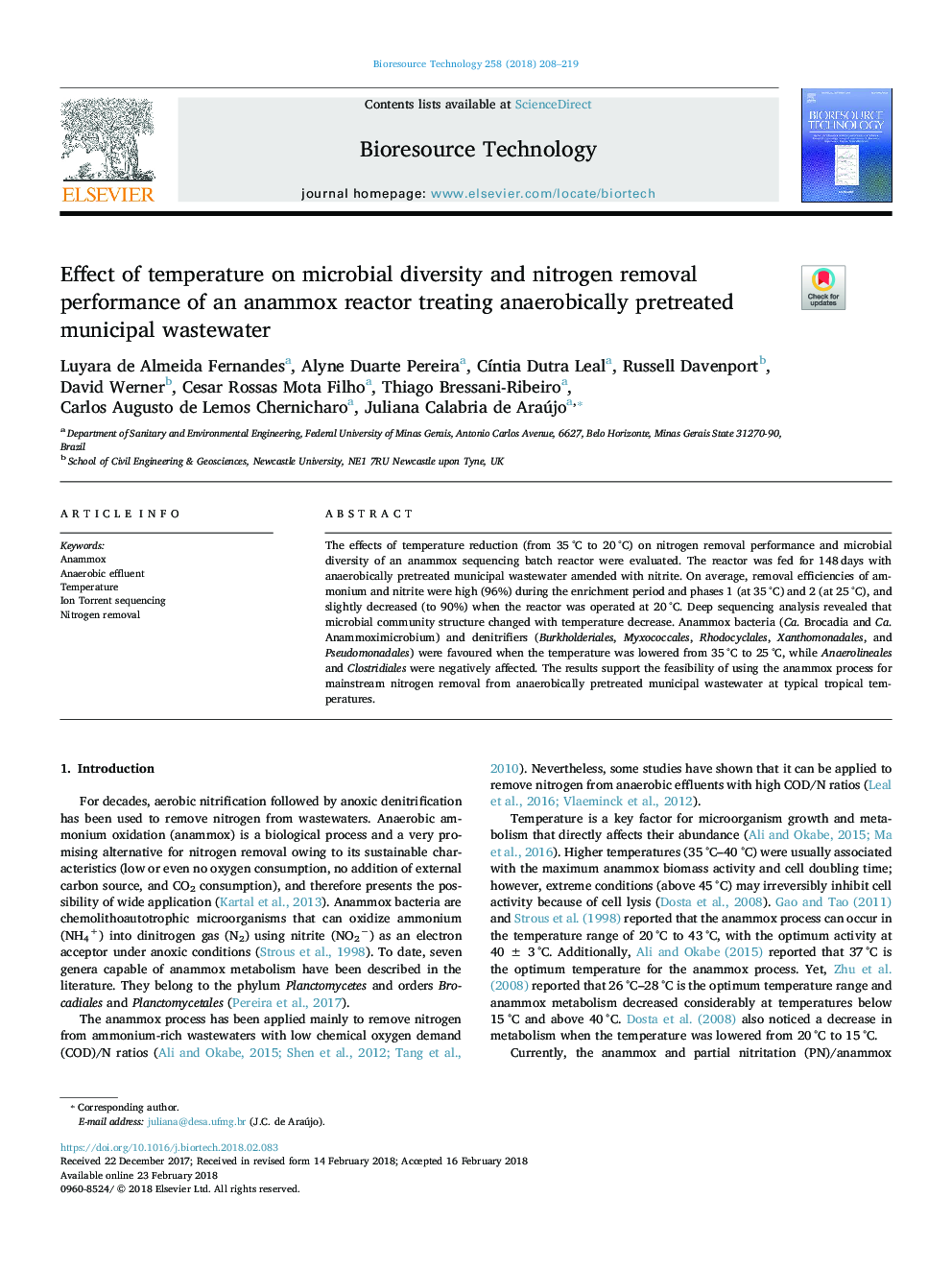| Article ID | Journal | Published Year | Pages | File Type |
|---|---|---|---|---|
| 7067537 | Bioresource Technology | 2018 | 12 Pages |
Abstract
The effects of temperature reduction (from 35â¯Â°C to 20â¯Â°C) on nitrogen removal performance and microbial diversity of an anammox sequencing batch reactor were evaluated. The reactor was fed for 148â¯days with anaerobically pretreated municipal wastewater amended with nitrite. On average, removal efficiencies of ammonium and nitrite were high (96%) during the enrichment period and phases 1 (at 35â¯Â°C) and 2 (at 25â¯Â°C), and slightly decreased (to 90%) when the reactor was operated at 20â¯Â°C. Deep sequencing analysis revealed that microbial community structure changed with temperature decrease. Anammox bacteria (Ca. Brocadia and Ca. Anammoximicrobium) and denitrifiers (Burkholderiales, Myxococcales, Rhodocyclales, Xanthomonadales, and Pseudomonadales) were favoured when the temperature was lowered from 35â¯Â°C to 25â¯Â°C, while Anaerolineales and Clostridiales were negatively affected. The results support the feasibility of using the anammox process for mainstream nitrogen removal from anaerobically pretreated municipal wastewater at typical tropical temperatures.
Related Topics
Physical Sciences and Engineering
Chemical Engineering
Process Chemistry and Technology
Authors
Luyara de Almeida Fernandes, Alyne Duarte Pereira, CÃntia Dutra Leal, Russell Davenport, David Werner, Cesar Rossas Mota Filho, Thiago Bressani-Ribeiro, Carlos Augusto de Lemos Chernicharo, Juliana Calabria de Araújo,
